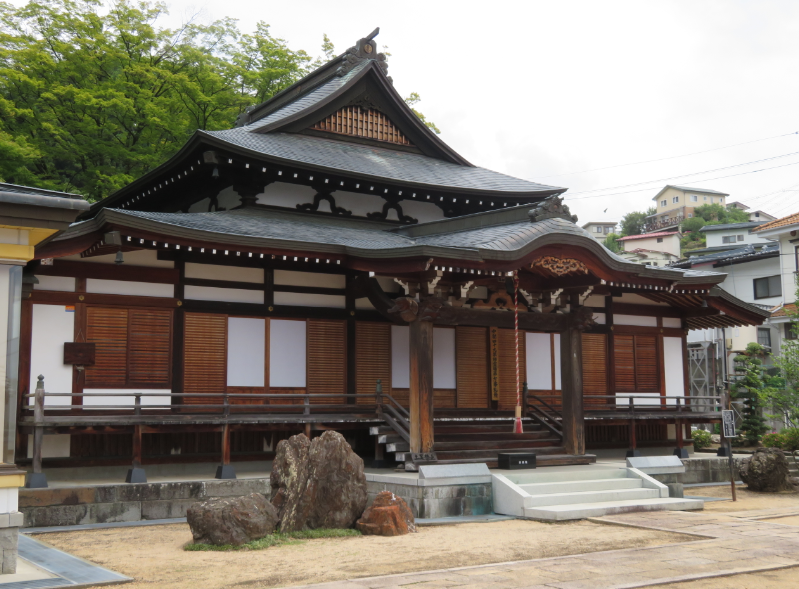Takashima Castle - Relocated Structures
TEXT Onsenji: A relocated gate from the castle is used as Onsenji's sanmon (main gate), and is particularly at home in its new location because the temple sits on a terrace on the hillside supported with bold ishigaki. Onsenji temple's main hall was formerly a building housing a Noh stage built
Takashima Castle - Takashima Castle - Relocated Structures
高島城移築建物
TEXT
Onsenji:
A relocated gate from the castle is used as Onsenji's sanmon (main gate), and is particularly at home in its new location because the temple sits on a terrace on the hillside supported with bold ishigaki.
Onsenji temple's main hall was formerly a building housing a Noh stage built at the castle by 8th generation castle lord, Suwa Tadamichi. One can see where extra facades have been built where formerly they would've been open to allow the audience to see the performance canopied under the large projecting gable.
Relocated Gate from Takashima Castle at Sōkoji (Chino, Nagano) 高島城移築三ノ丸御門・宗湖寺 [長野県茅野市]
The sanmon (main gate) of Sōkoji, a temple in periurban Chino Municipality, is said to have been originally built at Takashimajō, and thereafter relocated. The handsome gate served as the castle's sannomaru-gomon (third bailey gate). It also has some supporting, angled walls attached.
Relocated Gate from Takashima Castle at Jōkōji (Kataoka, Shiojiri, Nagano) 高島城移築御殿門・常光寺山門[長野県塩尻市片丘]
The sanmon (main gate) of Jōkōji, a temple in Kataoka Township of Shiojiri Municipality, is said to have been originally built at Takashima Castle but relocated in the Meiji period. The gatehouse, now guarded by two imposing niō (guardian deva) statures, may have served as the castle's gotenmon (palace gate). The ceramic tiles are styled with the distinctive paper mulberry leave emblem of the Suwa Clan. The gate has a large gable with a sealed, empty apartment within, which struck me as unusual. It turns out that the gate was originally a two-tiered gatehouse which was modified for use at the temple.
Jōkōji itself is a beautiful temple of utter whimsy. The temple's priest clearly likes animal ornamentation, and a many variety of animals in statuesque form can be seen throughout the temple grounds. The temple is known for its Yakushidō hall, from whence the gentle tinkling of wind chimes can be heard upon the chill air. The temple's main hall has an impressive roof structure, now with the thatching protected with sheet metal. Opposite the temple is the Komatsu family farmhouse, an Edo period thatched roof dwelling with protected status, though it is on private property and does not appear to be open to the public.
Gallery by ART.
Feature Pages



